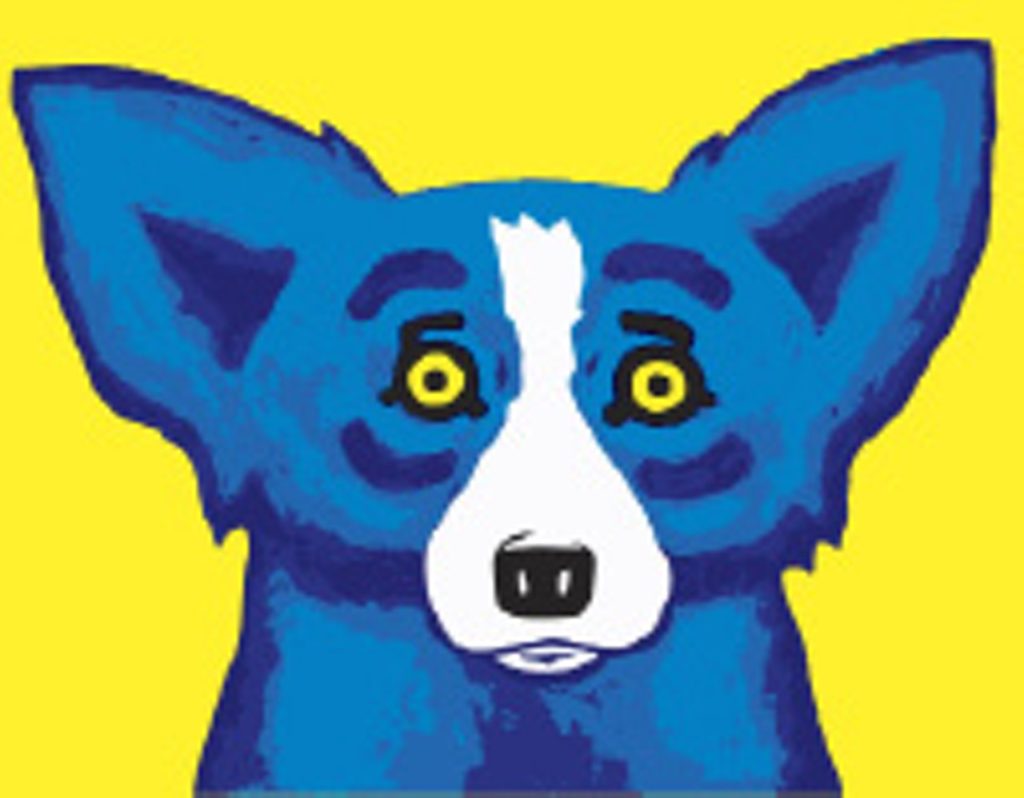Table of Contents
OWNING A DOG
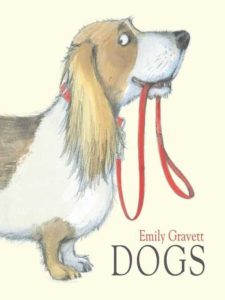
|
Emily Gravett’s delightfully illustrated Dogs (Simon & Schuster, 2010) introduces readers to a wide range of dogs – from Chihuahua to Great Dane – with a clever rhyming text (and a bit of a surprise ending). For ages 2-6. |
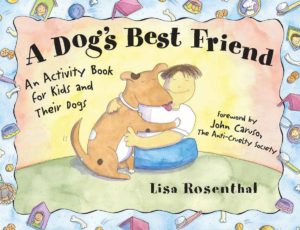
|
Lisa Rosenthal’s A Dog’s Best Friend (Chicago Review Press, 1999) is an activity book for kids and their dogs, filled with basic information, pet care tips, recipes, and games and activities. For ages 6-12. |
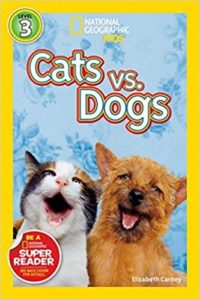
|
Elizabeth Carney’s Cats vs. Dogs (National Geographic Children’s Books, 2011), illustrated with great color photographs and crammed with helpful “Pet Words” and “Weird But True” fact boxes, compares the two. Who has the scariest relatives, for example? For each short section, there’s a declared winner. For ages 6-9. |
| For more resources, see Cats. | |
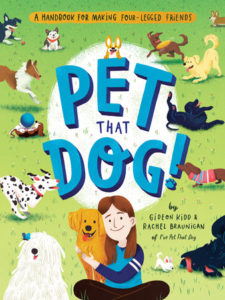 |
By Gideon Kidd – aged eleven – and Rachel Braunigan, Pet That Dog! (Quirk Books, 2020) is a helpful “Handbook for Making Four-Legged Friends.” Find out how to communicate with and care for your dog. For ages 7-12. |
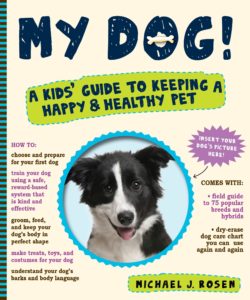
|
Michael Rosen’s My Dog! (Workman Publishing, 2011) – subtitled “A Kids’ Guide to Keeping a Happy & Healthy Pet” – is a cleverly designed manual for young dog owners, with basic information about dogs, dog care and training tips, and a dog identification guide. For ages 9-12. |
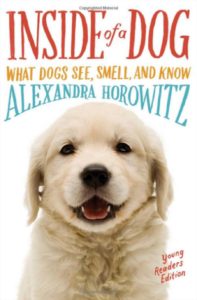 |
What is it really like to be a dog? By cognitive scientist Alexandra Horowitz, Inside of a Dog: What Dogs, See, Smell, and Know (Scribner, 2010) explains the world from the point of view of a dog. For teenagers and adults. |
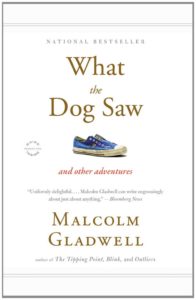 |
Malcolm Gladwell’s “What the Dog Saw” is an essay in his book of the same name (What the Dog Saw, Little, Brown and Company, 2009) about Cesar Millan, dog psychologist, and his remarkable insights into the behavior of dogs. For teenagers and adults. |
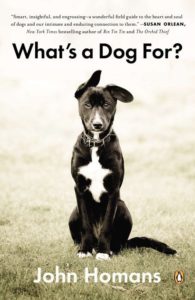 |
By John Homans, What’s a Dog For?: The Surprising History, Science, Philosophy, and Politics of Man’s Best Friend (Penguin Press, 2012) is a fascinating overview of all things dog. For teenagers and adults. |
| Looking to adopt a dog? Petfinder has a dog adoption checklist, and info on dog breeds, training, care, health, and nutrition. | |
| The Humane Society’s Educator Resources are categorized by grade (K-12). Topics include responsible pet ownership, pet care, and animal abuse. | |
| From the American Kennel Club, Educator Resources include lesson plans categorized by grade (K-2, 3-5, 6-8, and 9-12). |
SCIENCE AND DOGS
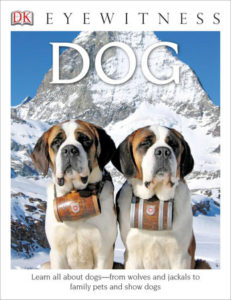 |
By Juliet Clutton-Brock, Dog (DK, 2014) in the popular Eyewitness series is stuffed with wonderful illustrations and information on all things dog, including evolution, domestication, anatomy, behavior, and breeds. For ages 8-12. |
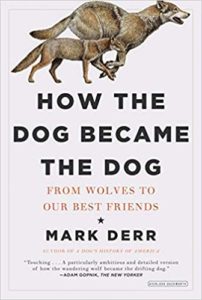 |
Mark Derr’s How the Dog Became the Dog (Overlook, 2013) discusses the various theories about the evolution of the domesticated dog from the wolf. Derr’s best guess: people and wolves co-evolved, teaming up in a relationship that was mutually beneficial. For teenagers and adults. |
| From The Scientist, Origin of Domestic Dogs presents evidence that suggests that dogs evolved from European wolves that hung out with human hunter-gatherers. | |
| From PBS, Evolution of the Dog has a short hyperlinked explanation. | |
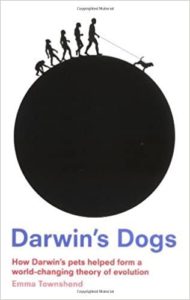 |
By Emma Townshend, Darwin’s Dogs (Frances Lincoln Books, 2009) is the story of how Darwin’s pet dogs – and dogs in general – helped him develop his famous theory of evolution. For teenagers and adults. |
| National Geographic’s How to Build a Dog is a short explanation of the science behind why dogs come in such a remarkable variety of shapes and sizes. | |
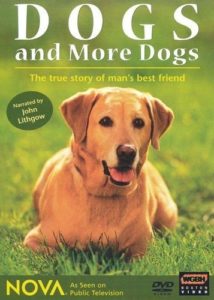 |
At the website for the NOVA program Dogs and More Dogs, find background information on the history and science of dogs, a slide show on working dogs, a matching quiz on dogs around the world, a program transcript, and teacher’s guide. |
| From Scitable, find out about the Genetics of Dog Breeding. | |
| A Recipe for Traits is a genetics lesson in which kids create a “DNA recipe” for a dog and then decode the recipe to discover what their dog looks like. Downloadable instructions. | |
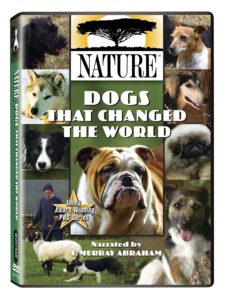 |
Dogs That Changed the World is a two-part special from Nature on the evolution of the dog from the wolf, the ways in which dogs have changed human society, and the ways in which humans have changed dogs. |
| Pavlov’s Dog is a game based on the work of Nobel laureate Ivan Pavlov on conditioned resources. Train your dog to drool on demand. | |
| Pavlov’s Dogs is an explanation of the work of Russian physiologist Ivan Pavlov. Readers learn the about classical conditioning. Included is original film footage of Pavlov’s experiments. | |
 |
By Rom Harré, Pavlov’s Dogs and Schroedinger’s Cat (Oxford University Press, 2009) is an exploration of the use of animals (including people) in scientific research – among them Darwin’s finches, Dolly the famous cloned sheep, and, of course, Pavlov’s dogs. For teenagers and adults. |
